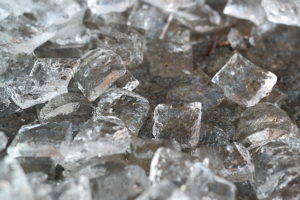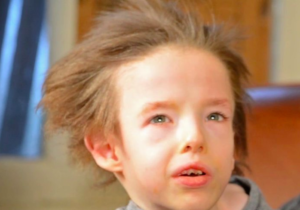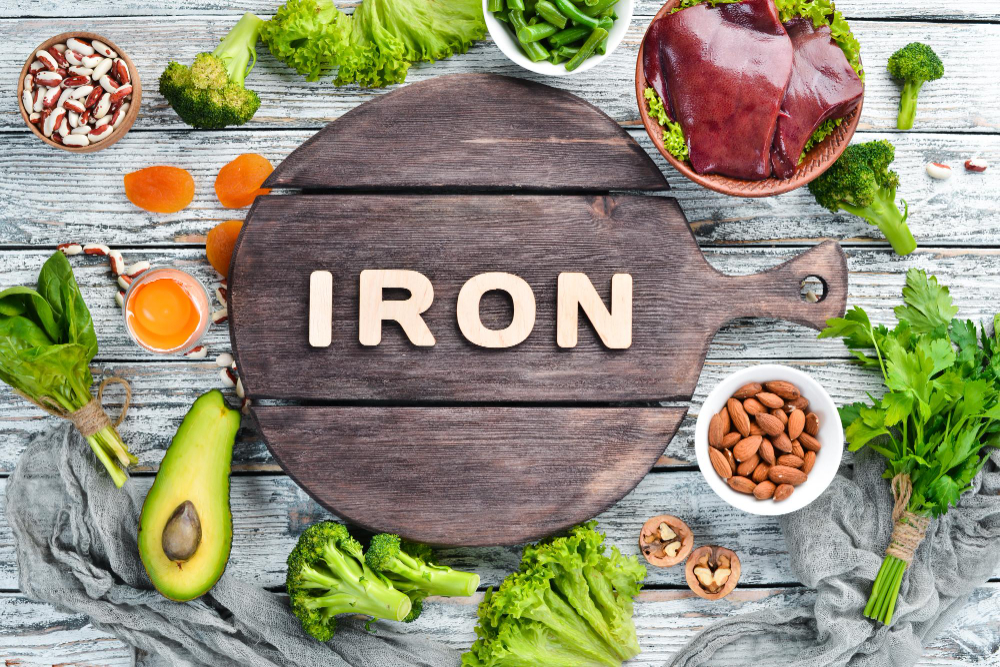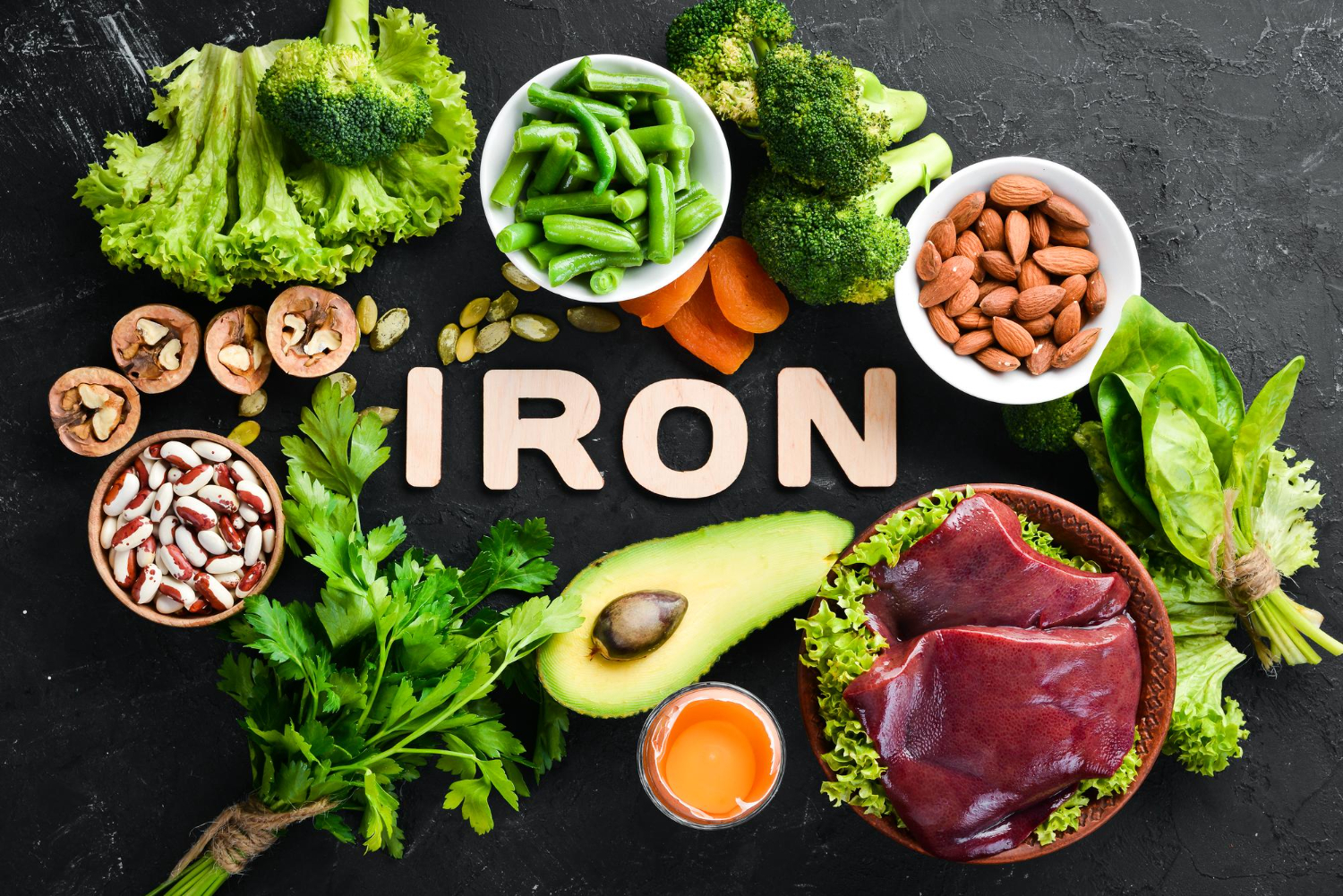Let’s imagine we have a few children coming into your clinic today, each with their own unique symptoms.
Patient A։ A 2-year-old has a craving for ice

Patient B։ A 3-year-old has growth retardation and abnormal hair

Can a good dietary history reveal their possible vitamin or mineral deficiency as the cause of their symptoms?
IRON
Iron deficiency can be due to the result of blood loss, low intake and decreased absorption. Signs and symptoms of iron deficiency include: fatigue, pallor, tachycardia, craving for ice (pagophagia), lower IQ scores, growth retardation, stomatitis, glossitis, and cheilitis.
In the 6 to 59 month age group in Armenia, about 16% have some level of anemia, with less than 1% that are severely anemic. Children in rural areas are slightly more likely to be anemic than those in urban areas, at 18% and 14% respectively.
Iron-rich foods include: red meat, egg yolks, beans, and dark green leafy vegetables. Vitamin C enhances iron absorption, so simultaneously eating food or drinking juices high in vitamin C can help one absorb the iron from the iron-rich foods.
Diagnosis and Treatment
Iron deficiency can be diagnosed by history and/or laboratory studies. A hemoglobin level may suggest the child is anemic, while an entire CBC may help further delineate the etiology based on the MCV value. Iron deficiency, however, can be seen without anemia and would best be diagnosed with a serum iron level. A ferritin level can also help one determine if overall iron stores are low in the body.
Iron supplementation comes in many different forms, so it is important to know how much elemental iron is being prescribed as dosing is typically based on the amount of elemental iron in the preparation. Premature babies need iron supplementation at about 1-2 months of age until about 6-12 months of age. Exact prophylaxis dosing will depend on the birth weight of the baby.
Infants and children can receive iron prophylactic dosing of 1-2 mg of iron per kilogram per day once daily. In the United States, it is recommended that breastfed infants receive 1 mg iron/kg/day until solid foods are introduced.
Mild to moderate iron deficiency anemia can be treated with 3 mg iron/kg/day in 1 to 2 divided doses. Severe iron deficiency anemia typically requires 4-6 mg of iron/kg/day in 3 divided doses.
While length of total therapy may vary based on the exact etiology of the iron deficiency, supplementation is typically given for several months. After the first month, one can repeat the hemoglobin level to see if it is trending upwards, but regardless, one should continue therapy for an additional 2-3 months to replace any deficiency of the iron stores within the tissues.
COPPER
Copper is found in foods such as liver, oysters, meats, fish, leafy greens, whole grains, nuts, legumes, and dark chocolate, amongst many other foods.
Deficiency of copper can present with microcytic anemia, chronic diarrhea, neutropenia, flaring of long bone metaphysis, periosteal elevation, and fractures
Menkes Kinky Hair Syndrome is an x-linked recessive defect in copper transport ATPase, leading to poor distribution of copper to many cells. It is a progressive neurodegenerative disorder characterized by growth retardation, abnormal hair (kinky, colorless, friable), cerebellar degeneration, optic atrophy, and early death (usually by age 3 if untreated). The symptoms begin during the first few months of life, and may include hypothermia, hypotonia, and generalized myoclonic seizures. Analysis reveals low serum copper and ceruloplasmin levels.
Treatment
Copper-histidine therapy given subcutaneously each day for life (particularly if started during neonatal period) has been shown to be effective in preventing neurologic deterioration in some patients.
Differential Diagnosis
Patient A: While there is no single cause of pagophagia, the differential diagnosis includes iron deficiency anemia and various psychiatric disorders (eg, obsessive compulsive disorder, depression, autism spectrum disorder). A thorough diet and developmental history should help in discovering the etiology of this craving.
Patient B: The differential diagnosis of children with growth problems and abnormal hair includes many different chromosomal, metabolic, and genetic disorders. However, one specific physical sign for Menkes Disease is the described “steely” or “kinky” hair seen as early as several months of age.
Hope this helps!
Best regards,
Eyal Ben-Isaac, MD, Children’s Hospital Los Angeles



